
Issue 6
September-October 2016
Workshops and Events
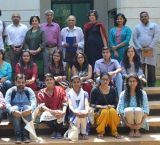
|
Managing Water ConflictsATREE, along with The Energy and Resources Institute (TERI) and the Forum for Policy Dialogue on Water Conflicts in India organised a training workshop between 4th and 7th October. The workshop consisted of sessions which introduced water and water conflicts and mechanisms to resolve them. A field visit to the Peenya industrial area and the Byramangala reservoir and villages downstream, where ATREE’s project on links between Bengaluru’s rapid urbanisation and agrarian change has yielded startling results, was also conducted. Speakers at the workshop included Rohini Nilekani, Chairperson of Arghyam and ATREE’s governing board member, P R Dasgupta, Senior Director and Distinguished fellow, TERI, and fellows from ATREE, among others. |
Water budgetingATREE organised a Water Budgeting Workshop in Doddaballapura town on the 20th Oct 2016, with 40 members representing the local government, farmers, educators and activists from the Arkavathy and Kumudvathi rejuvenation movements. Here, findings of a four-year research project on Adapting to Climate Change in Urbanising Watersheds (ACCUWa) were presented. ATREE researchers explained human disturbances to the water cycle, structure of hard rock aquifers, and connectivity of shallow and deep aquifers. A detailed water budget of Hadonahalli milli-watershed was also presented.More info at www.atree.org/accuwa |
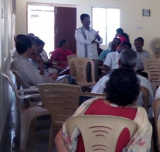
|
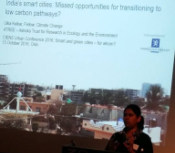
|
Smart Cities and Green CitiesUlka Kelkar, a research fellow at ATREE's Climate Change Mitigation and Development programme, participated in the ‘CIENS Urban Conference 2016: Smart and Green Cities – For Whom?’, on October 13, 2016 in Oslo, Norway. She presented a paper on ‘India’s smart cities: missed opportunities for transitioning to low carbon pathways’. The conference brought together urban researchers and practitioners from Norway, UK, Netherlands, Sweden and India and introduced innovative initiatives in Norway like crowdsourced air quality data, mobile games for personal carbon footprint management, and urban farming. The conference was organised on behalf of CIENS by Norsk Institutt for Vannforskning (NIVA), By- og regionforskningsinstituttet (NIBR), Høgskolen I Oslo og Akershus(HIOA) and the University of Oslo. |
The Cauvery IssueATREE’s Dr. Veena Srinivasan was a panelist in a discussion on ‘The Cauvery Issue: Yesterday, Today and Tomorrow,’organised by the Bangalore International Centre (BIC). The panel was be chaired by Prof. S. L. Rao, Emeritus Distinguished Fellow, TERI - The Energy and Resources Institute. Other panelists included VS Prakash, former Director Karnataka State Natural Disaster Monitoring Centre; A Ravindra, former Chief Secretary Government of Karnataka; and MK Ramesh, National Law School of India University. |
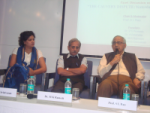
|

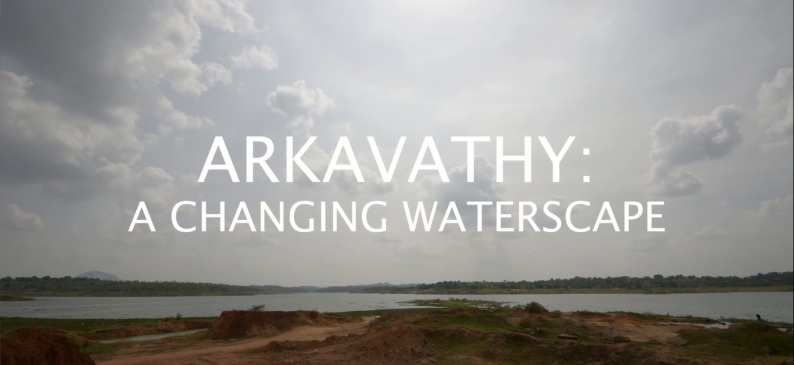 TG Halli Reservoir on the Arkavathy River to the west of Bangalore was once the main source of water to the city. Today, a considerable reduction in inflows into the reservoir has been noticed along with the drying of tanks in the catchment area. ATREE's research shows that groundwater pumping and eucalyptus plantations played a major role in explaining the decline. As farmers in the catchment responded to pressures of urbanisation, rain-fed farming became obsolete, forcing them to either dig deep bore-wells and go in for commercial crops or place their land under eucalyptus and switch to other occupations. Ultimately, this is a story of absent or fragmented institutions. Ground and surface water are a single interconnected resource and must be managed as such. We need watershed institutions that can regulate and allocate the available water resources in a fair and transparent fashion. |

PERSPECTIVES
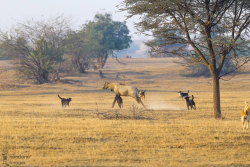
|
“Barking up the wrong tree: The agency in charge of controlling street dogs is completely ineffective,” – Scroll.in Oct 29, 2016Abi Tamim Vanak, an ATREE fellow currently working on the extent of India’s rabies issue, co-wrote an op-ed that reviews India's Animal Birth Control programme. “The vaccination of dogs against rabies is considered to be one of the most effective means to combat this dreaded disease. However, the reviews revealed a shocking lack of proper record-keeping raising doubts about the implementation of an anti-rabies programme.” Criticising the way dog population control measures are executed, the authors wrote, “Despite the expenditure of crores of rupees by the Animal Welfare Board of India as well as state governments, the dog population in India has continued to grow to well over 50 million dogs." Read More>> |
Do Dogs Threaten People’s Right to Safety in Public Spaces – The Wire, September 22In another op-ed for the Wire, Abi Tamim Vanak, along with Janaki Lenin, an independent journalist and Megha Uniyal, an independent researcher, highlighted the extent of the threat feral dogs may pose to the public and why managing population might just be the most “humane” alternative.“Dogs are driven by their fear of humans and territoriality, with sometimes tragic consequences for humans. An estimated 20 million people are bitten by dogs each year according to a 2006 study, causing a loss of 38 million human-days and costing Rs 20 crores in treatment. Today’s figures are likely to be several times higher. Managing stray dog populations is an animal welfare issue, too.” Read More>> |
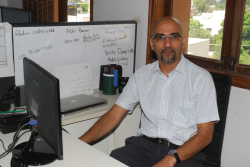
|
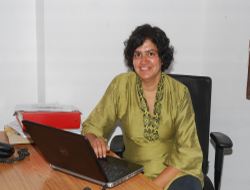
|
Cauvery Row; Let’s dive into facts and figures, The Economics times, October 8Veena Srinivasan, a fellow at ATREE and the leader of the Water, Land and Society programme, wrote in The Economic Times about the need for good science, which should be built on the bedrock of publicly-available data, for informing water disputes like the Cauvery issue.“We live in a brave, new world where there are emerging opportunities to change the science policy paradigm. More data is being placed in the public domain and new sources of information from private sources (satellite imagery, citizen science, low-cost sensors) are becoming available that will allow scientists to contest and validate published data...Allow the data to be triangulated from multiple unrelated sources and collaborate with graphic artists to make the information transparent and understandable.” Read more>> |

In The News
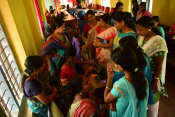
|
Plan to collect old clothes, give new bags in return – The Hindu, Oct 28Muhamma grama panchayat in Alappuzha joined hands with ATREE and another NGO, Kudumbasree, to produce cloth bags in a bid to discourage the use of plastic bags. ATREE, which has a Community Environment Resource Centre in Vembanad has been working with local communities on a range of socio-ecological issues in the region. This initiative entailed working with school children who collected old cloths from the village, which were then made into bags. A designer was also roped in to make the bags aesthetically appealing. Read more>> |
Sharing the waters of the river Cauvery: an alternative vision and approach – The News Minute, Oct 27A group of citizens, of which ATREE was a part, drew up a draft proposal in light of the escalating conflict over the river Cauvery’s waters. The signatories also included engineers, journalists, as well as policy advocacy, law, and community organisations. The proposal, which aims to bring back democratic, decentralised, and participatory solutions to resolving water conflicts, is a departure from centralised and bureaucratic processes which are often used to resolve domestic disputes. Read more>> |
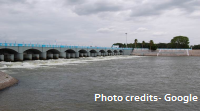
|
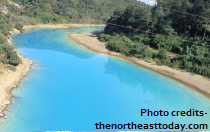
|
Meghalaya: The acidic and dying rivers of Jaintia Hills – The Myntdu and the Lukha rivers – The North East TodayA report on the polluted rivers, Myntdu and Lukha, in the Jaintia Hills of Meghalaya, mentioned ATREE and highlighted our insights on the plight of local residents who depend on these now-polluted waters. According to the article, “The Central Pollution Control Board (CPCB) had earlier indicated that the acid content in the rivers will prevent the sustenance of any life forms.” Local communities attribute the pollution of the river, which once supported the livelihoods of several fisherfolk, to coal mining, limestone quarrying and cement manufacturing industries. Read more>> |
Bloch finds research home at Himalayas – ULM Hawkeye, October 24thULM Hawkeye, a student newspaper of the University of Louisiana at Monroe, wrote about the fieldwork of Melissa Bloch, a junior biology major student selected by ATREE to work in its Eastern Himalaya regional office. Commenting on her fieldwork in the Himalayas, Melissa said to the newspaper, “When you are amongst the richness of life, you can’t help but be called to save it and protect it and speak for it because it doesn’t have a voice.” Read more>> |
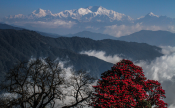
|
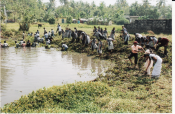
|
Fishermen start Vembanad clean up – The Deccan Chronicle, October 25The Deccan Chronicle writes about a plastic and waste-clearing drive organised by ATREE’s Community Environmental Resource Centre in Alappuzha, Kerala, around the Vembanad Lake. The 41-day cleaning mission by fishers during the season of the Mandalakalam pilgrimage to the Sabarimala hill shrine is aimed at clearing the waste that this massive congregation of pilgrims leaves behind. Up to ten 20kg sacks of plastic were collected from every two kilometres, which were sent to recycling centres. Read more>> |
A Science City Rises as an Ecosystem Disappears— The Wire, October 6An Article in the Wire on Kavals or pasturelands, of Challekere, Chitradurga District, Karnataka, mentioned a quote by ATREE’s fellow, Dr. Abi Tamim Vanak. Speaking on the development of a Science City, a uranium enrichment facility, and an airstrip for drone testing which now looms large over the heads of the villagers, Abi said that grasslands are devalued world over and are often treated as degraded forests that must be re-engineered. Vanak also pointed out that the Science City’s plan to recharge groundwater by greening the landscape will take away the habitat of local wildlife. Read more>> |
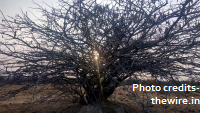
|
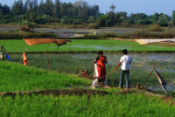
|
Like Bengaluru, the Neergantis are disappearing – Live Mint, October 17Sharachchandra Lele, a senior fellow at ATREE, was quoted in the Mint in an article about the Neergantis of the Arkavathy basin. He said to the daily newspaper that the neergantis managed the ancient network of irrigation in the region; their job was to operate the sluice gates of man-made tanks. However, the advent of the borewell made tanks largely irrelevant to farming, and when that happened, the neerghantis lost their livelihood. Read more>> |
STP at Peenya to check Vrishabhavathi pollution – Deccan Chronicle, September 08The Karnataka State Pollution Control Board (KSPCB) has decided to set up a sewage treatment plant in the Peenya Industrial Area, which was, according to an extensive study conducted by ATREE, a point source for heavy metal pollution in the Vrishabhavathy River. ATREE highlighted that not only do these heavy metal pollutants go undetected in KSPCB checks, but also how the functioning of one the oldest STPs in the area leaves much to be desired. Read more>> |
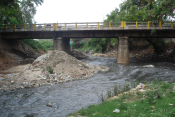
|
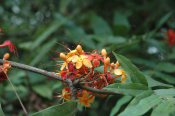
|
80 p.c. of Ayurveda products using Ashoka bark adulterated: study – The Hindu, September 22An article about one of ATREE’s research studies on the adulteration of herbal products highlighted a suspicion among researchers that raw products used in herbal medicines might be adulterated. ATREE tested samples of one of the most important medicinal plants used in raw herbal trade in India, Saraca asoca, commonly known as Asoka or Ashoka. It was found that over 80 per cent of the samples were spurious, representing plant material from at least seven different families. Read more>> |
